Table of Contents
Come join us now, and enjoy playing your beloved music and browse through great scores of every level and styles!
Can’t find the songbook you’re looking for? Please, email us at: sheetmusiclibrarypdf@gmail.com We’d like to help you!
John Denver: The Voice of the Mountains, the Heart of Folk, and America’s Troubadour.

Best Sheet Music download from our Library.
John Denver was more than just a singer-songwriter; he was a cultural phenomenon, an environmental advocate, and the embodiment of a specific, heartfelt American idealism during the turbulent 1970s. His clear, soaring tenor voice, coupled with earnest lyrics celebrating nature, simple joys, love, and peace, resonated deeply with millions, making him one of the most popular and beloved acoustic artists of the 20th century.
From Deutschendorf to Denver: The Early Ascent
Born Henry John Deutschendorf Jr. on December 31, 1943, in Roswell, New Mexico, his early life was shaped by a strict military family and frequent moves. This rootlessness fostered a yearning for connection and place, themes that would later dominate his songwriting. His grandmother gifted him his grandfather’s Gibson acoustic guitar at age 11, igniting a passion. While studying architecture at Texas Tech University, his musical calling proved stronger. Drawn by the burgeoning folk scene, he dropped out and moved to Los Angeles in 1964.

Please, subscribe to our Library.
If you are already a subscriber, please, check our NEW SCORES’ page every month for new sheet music. THANK YOU!
He began performing in folk clubs, initially struggling under his difficult-to-pronounce surname. Taking the advice of friends, he adopted “Denver” – a tribute to the capital of the state whose majestic Rocky Mountains symbolized the beauty and freedom he craved. This name change wasn’t just practical; it was symbolic of the identity he was forging. He joined the Chad Mitchell Trio in 1965, replacing Mitchell himself, honing his performance skills and songwriting craft. By 1969, he embarked on a solo career.
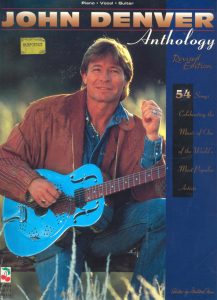
Browse in the Library:
Or browse in the categories menus & download the Library Catalog PDF:
Breakthrough and Stardom: The Country Roads to the Top
Denver’s solo journey started modestly, but his songwriting talent was undeniable. Peter, Paul and Mary had a hit with his “Leaving on a Jet Plane” in 1967, providing crucial early recognition. His own breakthrough came with the 1971 album “Poems, Prayers & Promises,” featuring the iconic “Take Me Home, Country Roads.” Co-written with Bill Danoff and Taffy Nivert, the song’s nostalgic yearning for West Virginia (a state he barely knew, ironically) became an instant and enduring anthem, capturing a universal longing for home and belonging. It catapulted him to stardom.
The hits flowed steadily throughout the early-to-mid 70s, a period that defined his superstardom:
- “Rocky Mountain High” (1972): Inspired by his deep love for Colorado (which he made his home), this ode to the transcendent beauty and spiritual awakening found in nature became his second signature song. Despite controversy over misinterpreted lyrics, it was eventually adopted as one of Colorado’s official state songs.
- “Sunshine on My Shoulders” (1973): A gentle, optimistic ballad celebrating simple warmth and happiness, showcasing his ability to convey profound emotion with minimalist grace. It became his first #1 pop single.
- “Annie’s Song” (1974): A soaring, heartfelt declaration of love written for his first wife, Annie Martell, in just ten minutes. Its sweeping melody and pure sentiment made it a global wedding standard and another #1 hit.
- “Thank God I’m a Country Boy” (1975): A lively, fiddle-driven celebration of rural life and simple pleasures, showcasing his versatility and connection to country music roots. Also reached #1.
- “Calypso” (1975): A tribute to Jacques Cousteau and his research ship, reflecting Denver’s growing passion for environmentalism and the oceans. It became a hit and solidified his image as a nature advocate.
Albums like “Rocky Mountain High,” “Farewell Andromeda,” “Back Home Again,” and “Windsong” dominated the charts. He won numerous awards, including Grammys (Song of the Year for “Back Home Again” in 1975) and Country Music Association Awards (Entertainer of the Year in 1975). His wholesome, clean-cut image (often seen in flannel shirts and round wire-rimmed glasses), acoustic guitar, and wholesome message offered a comforting counterpoint to the harder rock and disco dominating the era.

The Music: Sound and Sentiment
Denver’s musical style was firmly rooted in folk, blended seamlessly with pop accessibility and country instrumentation (acoustic guitar, banjo, mandolin, fiddle). His songwriting strengths lay in:
- Melody: Crafting instantly memorable, often soaring and uplifting melodies.
- Lyrics: Focusing on universal, positive themes – nature’s grandeur (“Rocky Mountain High,” “Eagle and the Hawk”), love (“Annie’s Song,” “Perhaps Love” with Plácido Domingo), home and belonging (“Take Me Home, Country Roads,” “Back Home Again”), peace (“Rhymes & Reasons”), and gratitude for life’s simple gifts (“Sunshine on My Shoulders”).
- Delivery: His pure, clear tenor voice conveyed sincerity, warmth, and an almost childlike wonder that connected deeply with audiences. His performances were known for their earnes.
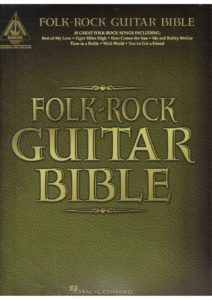
Beyond the Music: Activism and Advocacy
Denver’s love for nature wasn’t just lyrical; it was the core of his being and fueled significant activism:
- Environmental Champion: He was a founding member of the Windstar Foundation (1976), dedicated to environmental education and sustainable living. He tirelessly campaigned against nuclear power and weapons, deforestation, and for conservation. He lobbied Congress successfully against commercial supersonic flight over Colorado and worked extensively with organizations like Friends of the Earth, the National Wildlife Federation, and the Cousteau Society.
- Humanitarian Efforts: Appointed as a UNICEF Goodwill Ambassador in 1987, he focused on hunger relief and immunization programs, traveling extensively to support children’s causes. He received the prestigious Presidential World Without Hunger Award in 1985.
- Space Exploration Advocate: Denver was a passionate supporter of NASA and the space program, believing in its potential for peaceful exploration and global unity. He even trained as a backup civilian astronaut candidate for a 1985 Space Shuttle mission (canceled after the Challenger disaster). His song “Fly Away” was dedicated to the space program.
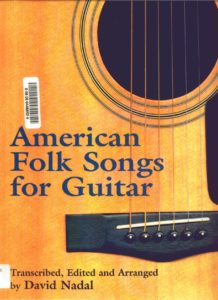
Personal Life, Challenges, and Later Career
Denver’s personal life was complex. His marriage to Annie Martell (1967-1982) produced two children but ended in divorce, deeply affecting him (reflected in later albums like “Seasons of the Heart”). A second marriage to actress Cassandra Delaney (1988-1993) also ended in divorce. He faced controversies, including a DUI arrest and public criticism for his strong opposition to the Gulf War in 1991, which some felt was unpatriotic.
Musically, his commercial peak waned after the late 70s. Changing musical tastes and the perception of his music as overly sentimental by some critics led to decreased chart success. However, he never stopped recording or touring. He explored different styles, collaborated with diverse artists (from opera star Plácido Domingo to The Muppets), released children’s albums, and continued performing for his devoted global fanbase. He also ventured into acting (“Oh, God!” with George Burns) and hosted several television specials.
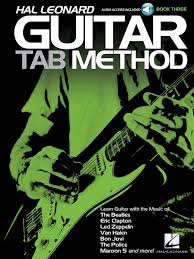
Tragic End and Enduring Legacy
On October 12, 1997, John Denver died tragically when his experimental amateur-built aircraft crashed into Monterey Bay, California. His death sent shockwaves around the world, a stark and sudden end to a life dedicated to beauty and peace.
John Denver’s legacy, however, remains vibrant and immense:
- Musical Impact: He sold over 33 million records in the US alone. Songs like “Country Roads,” “Rocky Mountain High,” and “Annie’s Song” are ingrained in the global cultural consciousness, covered by countless artists across genres and languages. “Take Me Home, Country Roads” is practically West Virginia’s second anthem.
- Environmental Inspiration: He was a pivotal figure in raising environmental awareness for a mainstream audience in the 70s, inspiring generations of activists. His work with Windstar and other organizations left a tangible mark.
- The Voice of Place and Positivity: He gave voice to a profound love for the American landscape, particularly the West, and championed themes of peace, love, and simple human connection. In times of division, his music offered (and still offers) a comforting sense of shared humanity and appreciation for the natural world.
- Cultural Icon: His image, sound, and message defined an era. Tributes abound, from the official adoption of “Rocky Mountain High” as a Colorado state song to the John Denver Sanctuary in Aspen and the Peak to Peak highway memorial near Rocky Mountain National Park.
- Enduring Popularity: His music continues to find new audiences. Its timeless melodies and heartfelt messages resonate across generations. Festivals, tribute artists, and continued strong sales/streaming attest to his lasting appeal.
John Denver was America’s troubadour. He wasn’t the most complex or edgy artist, but his authenticity, his unwavering belief in the beauty of the world and the goodness within people, and his extraordinary gift for crafting accessible, emotionally resonant songs made him a beacon for millions. He sang of mountains, sunshine, love, and home, and in doing so, he touched the hearts of the world, leaving behind a legacy as pure and enduring as the Rocky Mountain high he so cherished.
Browse in the Library:
Or browse in the categories menus & download the Library Catalog PDF:
“Back Home Again”: John Denver’s Hearthside Masterpiece (Released June 15, 1974)
Fifty-one years ago today, on June 15, 1974, John Denver released an album that would become the cornerstone of his superstardom and one of the defining records of 1970s folk-pop: “Back Home Again.” Arriving at the absolute zenith of Denver’s popularity, this album wasn’t just a collection of songs; it was a warm, inviting embrace, a sonic postcard from the Rocky Mountains celebrating love, home, nature, and the simple joys of life. It perfectly crystallized the essence of “The John Denver Sound” and delivered some of his most enduring classics.
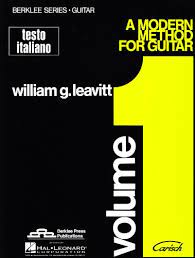
The Context: Denver’s Annus Mirabilis
1974 was a phenomenal year for Denver. He was riding an unprecedented wave of success:
- “Sunshine on My Shoulders” had hit #1 on the Billboard Hot 100 in March.
- His television special “The John Denver Show” aired to massive ratings in April.
- He was named the Country Music Association’s (CMA) Entertainer of the Year in October (largely on the strength of Back Home Again).
- He was arguably the biggest male recording artist in America.
“Back Home Again” arrived in this white-hot moment, and it delivered exactly what his massive audience craved: more of that heartfelt, acoustic-driven, optimistic sound that felt like a refuge from a turbulent world (Watergate, the end of the Vietnam War, economic woes).
The Sound: Refining the Formula
Building on the success of predecessors like “Poems, Prayers & Promises” and “Rocky Mountain High,” Back Home Again refined Denver’s signature blend:
- Acoustic Foundation: Gentle yet resonant acoustic guitar remained the bedrock.
- Warm Orchestration: Rich, tasteful string arrangements by Lee Holdridge and Milt Okun added depth and emotional sweep without overwhelming the organic core. Think soaring violins on “Annie’s Song,” lush backing on the title track.
- Country Touches: Subtle but effective use of dobro (Mike Auldridge), pedal steel (Buddy Emmons), mandolin, and banio anchored the sound in folk and country traditions (“Thank God I’m a Country Boy,” “Matthew”).
- The Voice: Denver’s clear, earnest tenor was in peak form, conveying sincerity, wonder, and deep affection effortlessly.
The Songs: A Tapestry of Home and Heart
- “Back Home Again” (Title Track): The album’s warm, welcoming heart. Co-written with Joe Henry, it’s a gentle ode to the profound comfort and peace found in returning to a loving home and partner after being away. Its imagery of a crackling fire, familiar surroundings, and shared silence resonated deeply. It became a #1 hit on the Billboard Country chart and a top 5 Pop hit.
- “On the Road”: A reflective, slightly melancholic look at the life of a traveling musician, yearning for the stability and connection waiting “back home again.” It showcased Denver’s ability to blend introspection with his characteristic optimism.
- “Grandma’s Feather Bed”: Pure, playful fun. Written by Jim Connor, this banjo-driven romp became an instant concert favorite and a top 30 Pop hit. Its infectious energy and nostalgic celebration of childhood memories provided perfect lighthearted contrast.
- “Matthew”: A poignant, piano-based ballad dedicated to Denver’s younger brother. It’s a tender reflection on childhood, the passage of time, and the enduring bond of brotherhood. One of Denver’s most beautiful and understated vocal performances.
- “Thank God I’m a Country Boy”: Written by John Sommers (fiddler for the Starland Vocal Band), this became one of Denver’s signature anthems. Its driving fiddle, infectious energy, and celebration of rural life (“Life ain’t nothin’ but a funny funny riddle”) made it a massive crossover hit, reaching #1 on both the Country and Pop charts in 1975. It remains a staple of sporting events and celebrations.
- “The Music Is You”: A sweet, melodic expression of love where Denver equates his beloved with the very essence of music itself. Quintessential Denver romanticism.
- “Annie’s Song”: The album’s crown jewel and one of the most famous love songs ever written. Composed in just ten minutes on a ski lift, inspired by his overwhelming love for his wife Annie. Its sweeping melody, soaring strings, and simple, profound lyrics (“You fill up my senses…”) created pure magic. It rocketed to #1 on the Billboard Hot 100, becoming his second chart-topper of 1974. It transcended genre and generation, becoming a global wedding standard.
- “It’s Up to You”: A gentle call for personal responsibility and kindness, delivered with Denver’s characteristic earnestness.
- “Cool An’ Green An’ Shady”: A serene ode to finding peace and solace in nature, specifically the calming embrace of trees. A perfect closer, reinforcing the album’s core themes.
Critical Reception and Impact:
- Commercial Triumph: The album was a massive success, reaching #1 on the Billboard Top Country Albums chart and #1 on the Billboard 200 Pop Albums chart. It spent multiple weeks at the top and remained on the charts for over a year.
- Award Recognition: It was the album that secured Denver the CMA Entertainer of the Year award in October 1974, a significant achievement for an artist often perceived as more pop than pure country. The title track also won Denver a Grammy for Best Country Vocal Performance, Male.
- Cultural Touchstone: “Annie’s Song,” “Thank God I’m a Country Boy,” and “Back Home Again” became instantly recognizable cultural staples. The album cemented Denver’s image as America’s wholesome, nature-loving troubadour.
- Muppets Connection: Denver’s friendship with Jim Henson led to several iconic appearances on The Muppet Show. “Back Home Again” and “Grandma’s Feather Bed” were performed memorably on the show, further embedding these songs in popular culture.
Legacy:
“Back Home Again” stands as John Denver’s most perfectly realized and commercially potent album. It captured him at the absolute height of his powers as a songwriter, vocalist, and interpreter. While later albums explored different themes or sounds, Back Home Again remains the purest distillation of what made millions adore him:
- The Celebration of Home: It’s the album’s central, unifying theme – the physical place, the loved ones within it, and the feeling of profound belonging.
- Accessible Depth: It blended simple, relatable sentiments with genuinely beautiful melodies and sophisticated arrangements.
- Emotional Authenticity: Denver’s sincerity shone through every note, making the joy, love, and occasional melancholy feel utterly real and unguarded.
Released on this day in 1974, “Back Home Again” wasn’t just a hit record; it was a warm invitation into John Denver’s world. It offered comfort, joy, and a celebration of life’s fundamental beauties – love, family, nature, and the irreplaceable feeling of being “back home again.” It remains a timeless classic, a hearthside masterpiece that continues to resonate with listeners seeking solace and simple, heartfelt beauty in music.
John Denver – Back Home Again (from The Wildlife Concert)
John Denver’s guitar playing style
John Denver’s guitar playing was the essential, grounding force beneath his soaring voice and heartfelt lyrics. While not a virtuoso in the technical sense, his style was instantly recognizable, deeply musical, and perfectly served his songs. It embodied the same qualities as his persona: warmth, sincerity, accessibility, and a profound connection to the natural world he celebrated.
Here’s a breakdown of the key elements defining his guitar style:
- The Foundation: Altered Tunings:
- Signature Sound: This is arguably the most distinctive aspect of Denver’s guitar work. He frequently used altered tunings, moving away from standard EADGBE.
- G6 Tuning (D-G-D-G-B-E): This was arguably his most iconic tuning. It created a rich, open, resonant sound with ringing drones and easy-to-form lush chords. You hear it prominently on:
- “Annie’s Song” (The iconic intro and flowing chords)
- “Rocky Mountain High” (The intro and verses)
- “Sunshine on My Shoulders”
- “Poems, Prayers & Promises”
- “Calypso”
- Other Tunings: He also used variations like D6 (D-A-D-F#-A-D) and others. These tunings allowed him to:
- Create full, orchestral-sounding chords with minimal finger movement.
- Generate natural harmonics and sympathetic string resonance.
- Produce a brighter, more “celestial” or “mountain air” timbre that perfectly matched his lyrical themes.
- Simplify complex chord voicings, making them accessible for singing while playing.
- The Capo as Essential Tool:
- Denver was almost always seen with a capo high on the neck, typically between the 3rd and 7th frets.
- Why?
- Key Matching: It allowed him to play his familiar open-position chord shapes (in his altered tunings) in higher keys suitable for his tenor voice.
- Brightness and Sparkle: Playing higher up the neck with open strings inherently produces a brighter, more chiming tone, enhancing the “sunshine” and “mountain air” feel of his music.
- Maintaining Resonance: Even capoed high, the altered tunings retained their open, resonant quality, unlike standard tuning capoed high which can sound thin.
- Rhythmic Foundation:
- Steady Travis Picking: A core component of his style was a gentle, steady Travis picking pattern (alternating bass notes with thumb, melody/brushing with fingers). This wasn’t the complex, flashy Travis picking of Chet Atkins, but a more accessible, rhythmic foundation. It provided a constant, rolling momentum and harmonic bed for his vocals.
- Examples: The intros/verses of “Take Me Home, Country Roads,” “Thank God I’m a Country Boy,” “Back Home Again.”
- Strumming with Feel: When strumming, he favored a moderate tempo, even rhythm with a warm, full attack. It wasn’t aggressive, but had a comforting, steady pulse. He often used a combination of downstrokes and light upstrokes, sometimes incorporating muted strums (“chucks”) for subtle percussion.
- Examples: The choruses of “Country Roads,” “Thank God I’m a Country Boy,” “Grandma’s Feather Bed.”
- Syncopation and Groove: While often steady, he could inject subtle syncopation and a genuine sense of groove, especially in more country-leaning songs like “Thank God I’m a Country Boy” or “Grandma’s Feather Bed.”
- Steady Travis Picking: A core component of his style was a gentle, steady Travis picking pattern (alternating bass notes with thumb, melody/brushing with fingers). This wasn’t the complex, flashy Travis picking of Chet Atkins, but a more accessible, rhythmic foundation. It provided a constant, rolling momentum and harmonic bed for his vocals.
- Melodic Embellishment and Simplicity:
- Intro Hooks: He was a master of crafting simple, memorable guitar intros that instantly set the mood and identified the song (e.g., “Annie’s Song,” “Country Roads,” “Rocky Mountain High,” “Sunshine on My Shoulders”). These were often based on the open strings and unique voicings of his altered tunings.
- Counter-Melodies: Within his fingerpicking patterns, he would often weave simple, flowing melodic lines against the bass, adding richness without complexity (“Matthew,” “Follow Me,” verses of “Perhaps Love”).
- Chord Voicings: His altered tunings naturally led to unique, often suspended or add9 chord voicings that sounded lush and expansive, avoiding standard barre chords. He favored open strings and ringing tones.
- Harmonics: He occasionally used natural harmonics, adding sparkle and ethereal touches, perfectly suited to nature themes.
- Tone and Instrument Choice:
- Warm, Clear, Acoustic Tone: Denver favored a natural, unprocessed acoustic guitar sound. His tone was warm, full-bodied, and articulate, emphasizing the midrange and clarity of individual strings within chords. Reverb was often used tastefully in recordings to enhance the spaciousness.
- Guild Guitars: His primary instruments were Guild 12-strings and 6-strings, particularly the Guild F-50 and F-512 jumbo models. These guitars were known for their:
- Loud, Projecting Sound: Essential for solo performances and filling large venues without excessive amplification.
- Balanced Tonality: Clear highs, strong mids, and deep but not boomy lows – perfect for both strumming and fingerpicking.
- Rich Sustain: Allowing his open chords and harmonics to ring beautifully. The Guild became synonymous with his image and sound.
- Philosophy: Serving the Song
- Above all, Denver’s guitar playing was functional and supportive. It existed to:
- Frame and support his voice, never competing with it.
- Create the rhythmic and harmonic foundation for the song’s emotion.
- Evoke the specific feeling of place, peace, or joy central to the lyric.
- He wasn’t interested in flashy solos or technical displays; his playing was an extension of the song’s message – accessible, warm, and inviting.
- Above all, Denver’s guitar playing was functional and supportive. It existed to:
In Summary:
John Denver’s guitar style was defined by warmth, resonance, and rhythmic clarity, achieved through:
- Signature altered tunings (especially G6) creating open, ringing chords.
- Strategic capo use high on the neck for vocal key and bright tone.
- Steady, gentle Travis picking and even, full strumming.
- Simple, memorable melodic hooks and intros.
- Unique, lush chord voicings inherent to his tunings.
- The rich, projecting sound of his Guild jumbo guitars.
- An unwavering focus on serving the song and the vocal.
He transformed relatively simple techniques into an instantly recognizable and deeply evocative soundscape. His guitar wasn’t just an instrument; it was the warm hearth, the rustling aspen leaves, the clear mountain stream, and the steady heartbeat underlying his timeless songs of home, love, and nature. It was the perfect acoustic counterpart to “the voice of the mountains.”
His approach was fascinating precisely because it wasn’t about flashy virtuosity, but about serving the song and creating an atmosphere. The combination of those altered tunings, the high capo, the steady rhythmic pulse, and the warm resonance of his Guilds created something instantly recognizable and deeply evocative – like sunshine breaking through pines or the feeling of coming home.
A few final thoughts on why his guitar work matters:
- Accessible Magic: He made complex, beautiful sounds accessible. Any intermediate player can learn a G6 tuning and a Travis pattern, and suddenly, they’re tapping into that “Denver sound.” He democratized a certain kind of sonic beauty.
- The Sound of Place: His guitar wasn’t just an instrument; it was a landscape painter. Those ringing open strings and capoed highs sound like the Rockies, like clear streams and open skies. It was sonic environmentalism.
- Emotional Directness: The simplicity and warmth of his playing bypassed intellectual barriers and connected straight to the heart, perfectly mirroring his lyrical sincerity.
- Enduring Influence: Countless singer-songwriters (whether they know it or not) owe a debt to his approach – using tunings for texture, capo for tone, and prioritizing feel and song-serving over technical prowess.
Want to hear/see it in action? I highly recommend seeking out:
- Live Performances: Look for 70s concerts (like “Rocky Mountain Christmas” or “An Evening with John Denver”). Seeing his hands work the tunings and capo is illuminating.
- “Annie’s Song” Intro: Isolate the guitar – it’s a masterclass in how a simple, open-tuned figure can define an entire song’s emotional core.
- “Rocky Mountain High” Verses: Listen to the interplay of the picked bass notes and the melodic fragments dancing above in G6 tuning.
- “Thank God I’m a Country Boy”: Focus on the driving Travis pattern that gives the song its infectious energy.
His guitar playing was the quiet, essential engine beneath the voice that soared. It was the campfire crackle, the mountain breeze, the steady heartbeat of his music. Bravo indeed to John Denver, the craftsman with the Guild guitar!
Back Home Again – Lyrics
There’s a storm across the valley
Clouds are rolling in
The afternoon is heavy on your shoulders
There’s a truck out on the four lane
A mile or more away
The whining of his wheels just makes it colder
He’s an hour away from riding
On your prayers up in the sky
And ten days on the road are barely gone
There’s a fire softly burning
Supper’s on the stove
It’s the light in your eyes that makes him warm
Hey, it’s good to be back home again
Sometimes this old farm feels like a long-lost friend
Yes, and hey, it’s good to be back home again
There’s all the news to tell him
How you’ve spent your time
What’s the latest thing the neighbors say?
And your mother called last Friday
Sunshine made her cry
You felt the baby move just yesterday
Hey, it’s good to be back home again, yes, it is
Sometimes this old farm feels like a long-lost friend
Yes, and hey, it’s good to be back home again
And all the time that I can lay this tired old body down
To feel your fingers feather soft upon me
The kisses that I live for, the love that lights my way
The happiness that living with you brings me
It’s the sweetest thing I know of
Just spending time with you
It’s the little things that make a house a home
Like a fire softly burning
Supper on the stove
The light in your eyes, it makes me warm
Hey, it’s good to be back home again
Sometimes this old farm feels like a long-lost friend
Yes, and hey, it’s good to be back home again
Hey, it’s good to be back home again, you know it is
Sometimes this old farm feels like a long-lost friend
Hey, it’s good to be back home again
I said, hey, it’s good to be back home again
